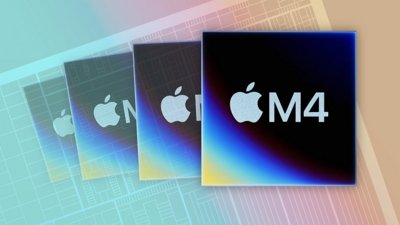A class-action lawsuit is accusing Apple of false advertising, claiming the crackling issue of the first-gen AirPods Pro go against Apple's marketing promises.
Filed on November 1 in the United States District Court for the Northern District of California, the proposed class action lawsuit titled "LaBella et al v. Apple" claims that Apple was incorrect in marketing the high-quality audio of the AirPods Pro. Across 51 pages, the lawsuit alleges that the audio issues of the personal audio accessories go directly against the quality claims.
The lawsuit, first reported by ClassAction.org, discusses how consumers complained about audio problems when using the AirPods Pro within months of release. The issues were significant enough for Apple to launch a service program for affected units made before October 2020.
However, the lawsuit insists that the problems aren't just experienced by users of initially produced units, and that all first-generation AirPods Pro actually suffer from the issues. Apple was supposedly aware of it affecting more users, so it allegedly extended the service program to cover AirPods for three years after the initial sale.
Apple's own support documents explain that users could hear cracking or static sounds, along with Active Noise Cancellation faults, in certain circumstances. This included the use of the AirPods Pro in loud environments, or while a user was exercising or in a phone call.
The lawsuit further claims that customers would've either avoided the AirPods Pro or paid less for them if the issues were known about beforehand.
"The AirPods Pro Gen 1 were thus not worth the premium price that consumers paid for them— as they contained an Audio Defect and did not live up to Apple's advertising," the suit states.
Apple is also alleged to have failed to notify first-gen model buyers of the support program's existence.
The claims for relief include accusations Apple breached its warranty under California law, Ohio law, Texas law, and Pennsylvania law, violations of the Song-Beverly Consumer Warranty Act, the California Consumer Legal Remedies Act, California Unfair Competition law, and the Consumer Protection Acts.
In its Prayer for Relief, the lawsuit demands damages to plaintiffs and class members, pre- and post-judgment interest, for Apple to repair and replace affected AirPods Pro units, and attorneys' fees.
 Malcolm Owen
Malcolm Owen







-m.jpg)






 William Gallagher
William Gallagher
 Wesley Hilliard
Wesley Hilliard

 Christine McKee
Christine McKee


 Andrew Orr
Andrew Orr





-m.jpg)




16 Comments
I’ve had two complete sets of original AirPod Pro replaced because of the crackling. The Apple employees were great and understanding and no questions asked.
I went through a couple rounds of replacements-of-replacements for the first generation AirPods Pro because of the 'crackling' issues. Would it be better if they didn't have that problem? Absolutely. Given how painless the warranty replacement process was, however, I fail to see how a class action suit is appropriate. Since Apple already implemented a replacement program for affected AirPods, what is the point of a suit seeking to make Apple implement a repair and replace program for affected AirPods, other than to provide for a vehicle to collect attorneys' fees that hadn't previously been needed, since Apple willingly addressed the problem without a lawsuit?
P.S. This is precisely why Apple put the charging port on the bottom of the Magic Mouse. By making it impossible to use the mouse while it's charging, they avoid the lawsuits from the inevitable cases of damaged charging ports that would result from some people leaving their wireless mice plugged in all the time while using them. Apple could've put the port on the front and plastered warnings everywhere, telling users not to leave the mouse plugged in once it's charged. They could've even written code that would pop up a dialog box that says, "Your Magic Mouse is fully charged. Please disconnect it from the charging cable. Do not leave your Magic Mouse plugged in after it is charged, as you may eventually damage your Magic Mouse by leaving it plugged in while using it. [OK]." Some percentage of users would click "ok" and leave it plugged in anyway.
Some percentage of them would then eventually damage the charging port on their Magic Mouse by torquing and twisting a connection not designed for constant, repetitive motion. They would then find some lawyers who would file a class action suit arguing that by putting the charging port on the front of the mouse, Apple knew that some users would leave them plugged in and damage their devices. In fact, the lawyers would argue, those warnings serve as an admission that Apple knew about this "defect," and therefore they must repair or replace any mouse damaged by such misuse, and then pay a hefty damages fee to customers and their lawyers in penance for this grievous mistake.
I had an Airpods Pro 1st generation that was denied the fix because their service program had expired. I had not used them much while exercising or in calls. The buzzing got worse if I used the airpods while moving or spoke. When i found about the service program it was too late.
Apple = Lawyers’ Slot Machine